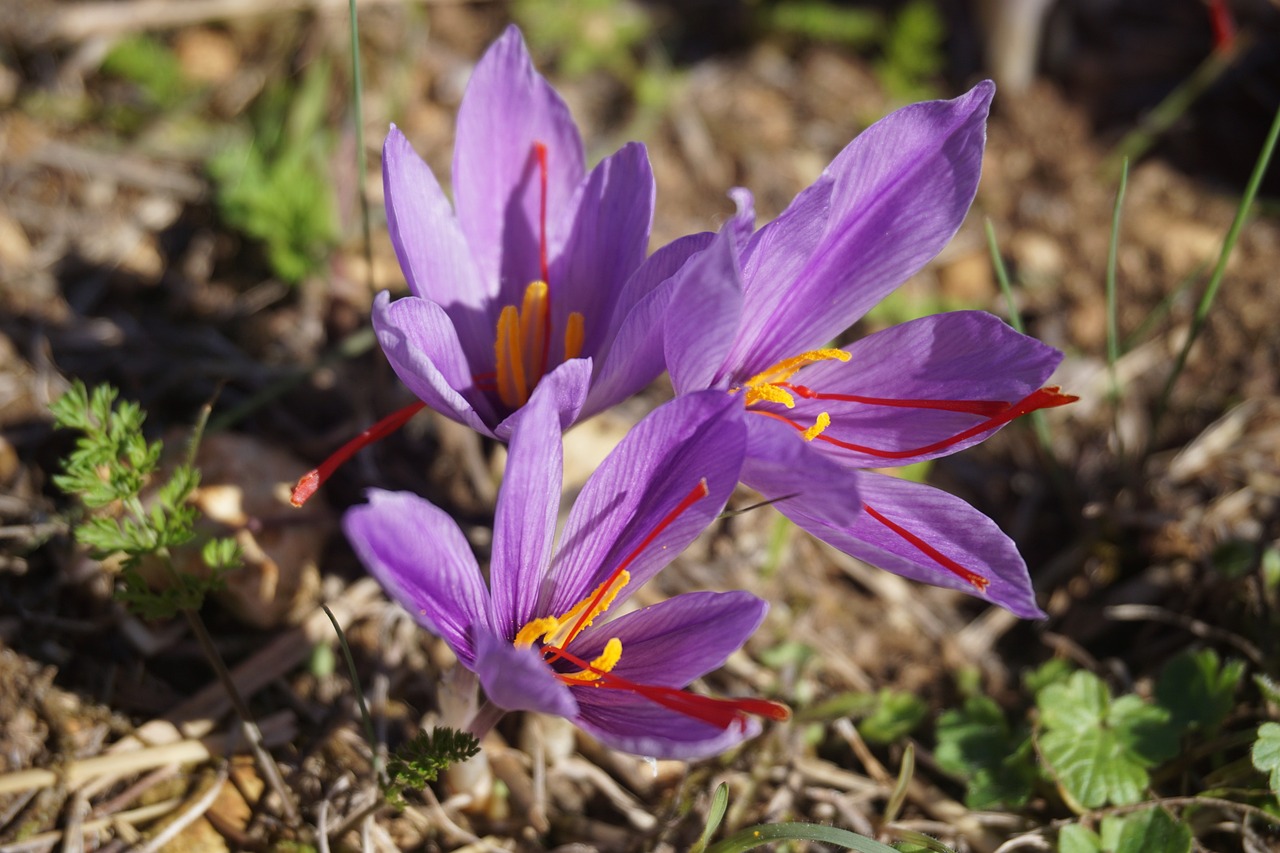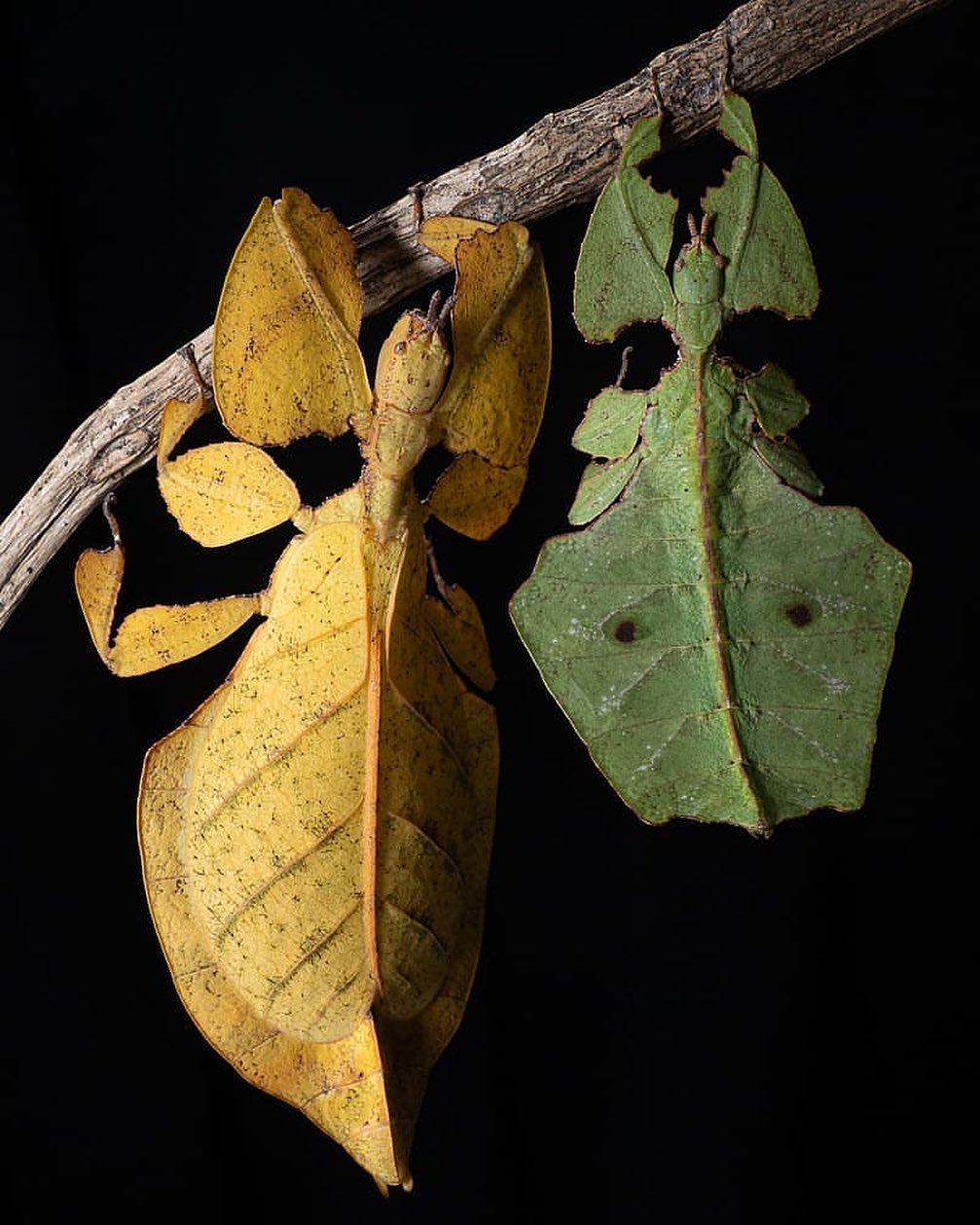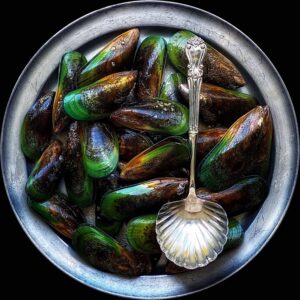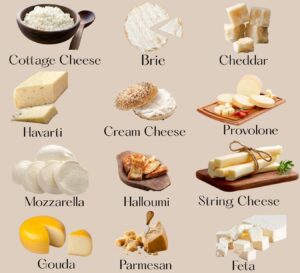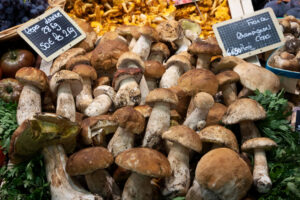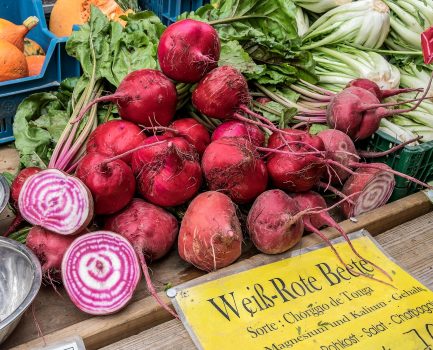 Pin
Pin Images from Wikimedia Commons
Your garden probably looks like everyone else’s. Rows of tomatoes, maybe some peppers, the usual green beans. But what if you could grow vegetables so unusual that guests stop mid-bite to ask what they’re eating? These 10 rare and unique vegetables offer exactly that kind of magic.
Most gardeners never venture beyond the seed packets at their local store. They miss out on centuries-old varieties that our great-grandparents treasured. Purple potatoes that bleed violet when you cut them. Cucumbers that taste like lemons. Carrots in colors that nature seems to have painted by hand.
Growing unusual varieties isn’t just about novelty. These forgotten vegetables often pack more nutrition than their common cousins. They’ve survived for generations because they’re tough, flavorful, and worth preserving. Your dinner table will never look ordinary again.
Table of Contents
1. Purple Top Turnips
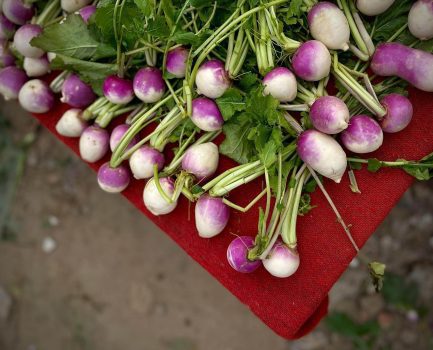 Pin
Pin Photo by Nishant Aneja
Purple top turnips might sound boring, but these beauties will change your mind about root vegetables forever. The creamy white flesh contrasts beautifully with the purple crown that peeks above ground. Each bite delivers a mild, sweet flavor that’s nothing like the bitter turnips you remember avoiding as a child.
These hardy vegetables thrive in cool weather when most other crops are struggling. Plant them in late summer, and you’ll be harvesting crisp, fresh roots well into winter. The greens are just as valuable as the roots—they taste like a cross between spinach and mustard, perfect for sautéing with garlic.
Purple top turnips store beautifully in a cool basement or refrigerator. One good harvest can keep your family in fresh vegetables for months. They’re also incredibly versatile in the kitchen, working equally well roasted, mashed, or added to hearty stews.
2. Romanesco Cauliflower
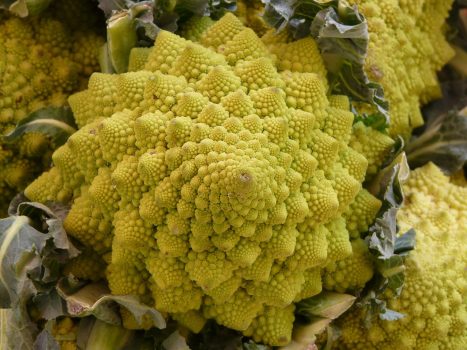 Pin
Pin Image by Hans from Pixabay
Romanesco cauliflower looks like something an alien might have left behind in your garden. Each spiral follows a perfect mathematical pattern called a Fibonacci sequence. The lime-green florets twist upward in mesmerizing formations that make this vegetable as much art as food.
Don’t let its wild appearance fool you. Romanesco tastes like a gentle blend of cauliflower and broccoli, with a slightly nutty finish. The texture stays firm even after cooking, making it perfect for roasting or grilling. Kids who usually run screaming at the sight of vegetables often become fascinated by its unusual shape.
Growing romanesco requires patience and cool temperatures. Start seeds indoors in late winter, then transplant after the last frost. Give each plant plenty of space—these beauties can grow quite large. The wait is worth it when you harvest heads that look like living sculptures.
3. Glass Gem Corn
 Pin
Pin Image by @allotment_living / Instagram
Glass gem corn creates ears that look like someone scattered precious stones across each cob. The kernels shimmer in shades of blue, purple, pink, and amber. Each ear is completely different, making every harvest feel like opening a treasure chest.
This isn’t sweet corn for eating fresh off the cob. Glass gem is a flint corn, perfect for grinding into flour or popping like popcorn. The kernels are hard and colorful, designed to dry and store through winter. Native Americans developed this variety over centuries, selecting for the most beautiful colors.
The plants grow tall and strong, reaching six feet or more. They need a full growing season to mature, so start them early in spring. Save the most stunning ears for decoration—they’ll keep their brilliant colors for years. The rest can become the most beautiful cornmeal you’ve ever seen.
4. Dragon Tongue Beans
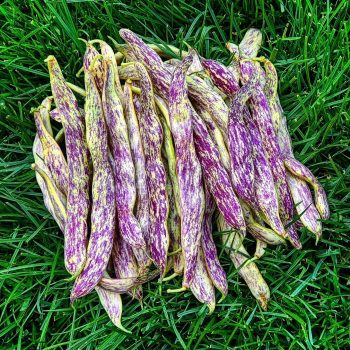 Pin
Pin Image by @bakercreekseeds / Instagram
Dragon tongue beans earn their fierce name with cream-colored pods splashed in vivid purple streaks. These flat, wide beans look almost too pretty to pick. But their beauty isn’t just skin deep—they deliver a rich, nutty flavor that puts regular green beans to shame.
Pick them young and tender for the best eating experience. The purple streaks fade when cooked, but the exceptional taste remains. These beans work beautifully in stir-fries, where their flat shape helps them cook evenly and quickly. They also make stunning additions to fresh salads when blanched and chilled.
The plants are bush types, so they won’t take over your garden like pole beans might. They produce heavily throughout the summer if you keep harvesting regularly. Plant successive crops every two weeks for a continuous supply of these eye-catching pods all season long.
5. Purple Carrots
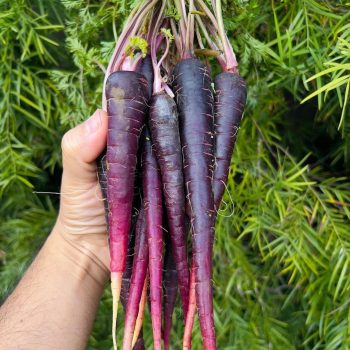 Pin
Pin Image by @farmfluence.co / Instagram
Orange carrots are actually the newcomers. Purple carrots ruled gardens for centuries before Dutch growers developed the orange varieties we know today. These deep purple roots pack more antioxidants than their orange cousins, with a slightly spicier, more complex flavor.
The purple color runs all the way through the carrot, creating stunning slices that add drama to any dish. They’re particularly beautiful when roasted, as the heat intensifies their natural sweetness while keeping that rich purple hue. Raw purple carrots make ordinary salads look gourmet.
Growing purple carrots requires the same care as regular varieties. They prefer loose, sandy soil that lets the roots grow straight and long. Thin the seedlings early to give each carrot room to develop properly. The surprise on people’s faces when you pull these from the ground makes every bit of effort worthwhile.
6. Lemon Cucumbers
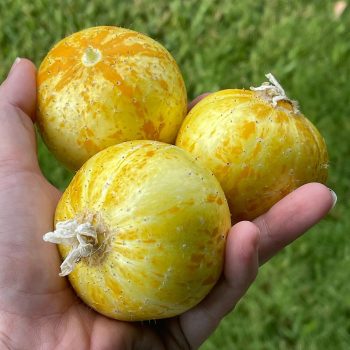 Pin
Pin Image by @shes_a_mad_gardener / Instagram
Lemon cucumbers look exactly like their citrus namesakes—round, yellow, and about the size of a tennis ball. But bite into one, and you’ll taste pure cucumber refreshment with a hint of extra sweetness. These cheerful vegetables never develop the bitter edge that sometimes plagues regular cucumbers.
The compact, round shape makes lemon cucumbers perfect for stuffing or slicing into thick rounds for sandwiches. Their tender skin doesn’t need peeling, and they stay crisp longer than traditional varieties. Kids love them because they look like something fun rather than just another green vegetable.
The vines are prolific producers, often yielding more fruit than standard cucumber plants. They’re also less prone to common cucumber diseases, making them easier for beginning gardeners to grow successfully. Harvest them when they’re bright yellow but still firm—overripe ones become seedy and lose their crisp texture.
7. Black Potatoes
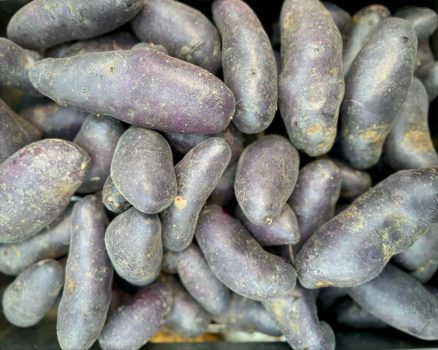 Pin
Pin Image by @theballoontree / Instagram
Black potatoes shock people who expect the usual brown or red skins. These dramatic tubers have deep purple-black skin that hints at the colorful flesh inside. The meat ranges in purple hues, creating stunning contrasts when sliced. They taste remarkably similar to regular potatoes but with a slightly nuttier, earthier flavor.
The deep color comes packed with anthocyanins—the same antioxidants found in blueberries and red wine. These compounds give black potatoes serious nutritional power while creating dishes that look like they belong in a high-end restaurant. Mashed black potatoes turn an elegant purple-gray that guests will remember long after dinner.
Growing black potatoes follows the same rules as any potato variety. Plant them in well-drained soil and hill up the dirt as the plants grow. The main difference is the excitement you’ll feel when digging up these dark treasures. Store them in a cool, dark place just like regular potatoes—they’ll keep for months.
8. White Eggplant
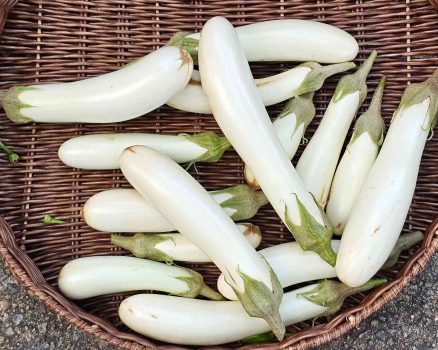 Pin
Pin Image by @vijjikitchengarden / Instagram
White eggplants look like pale ghosts of their purple cousins, but they pack even more flavor into their creamy skin. These ivory beauties have a milder, less bitter taste than traditional purple varieties. The flesh stays whiter when cooked, making them perfect for dishes where you want the eggplant flavor without the dark color.
The plants produce abundantly in hot weather, often yielding more fruit than purple types. White eggplants also tend to have fewer seeds, giving you more meaty flesh per fruit. They work beautifully in Mediterranean dishes, Indian curries, or simply grilled with olive oil and herbs.
Growing white eggplants follows the same rules as purple varieties. They need warm soil and consistent moisture throughout the growing season. Start seeds indoors about eight weeks before your last frost date. The pale fruits can be harder to spot among the leaves, so check plants regularly once flowering begins.
9. Chioggia Beets
 Pin
Pin Images from Wikimedia Commons
Chioggia beets hide an amazing secret beneath their ordinary-looking exterior. Slice one open, and you’ll reveal concentric rings of red and white that look exactly like candy cane stripes. These Italian heirloom beets have been delighting gardeners for over 150 years with their stunning internal patterns.
The flavor is milder and sweeter than regular red beets, without that sometimes overwhelming earthiness. The beautiful stripes hold their pattern when cooked gently, though they’ll fade if overcooked. Raw Chioggia beets make spectacular additions to salads, where the rings create natural artwork on every plate.
These beets grow just like any other variety, preferring cool weather and well-drained soil. Sow seeds directly in the garden in early spring or late summer. Harvest them when they’re about two inches across for the most tender texture and vibrant striping. The greens are delicious too, so nothing goes to waste.
10. Armenian Cucumber
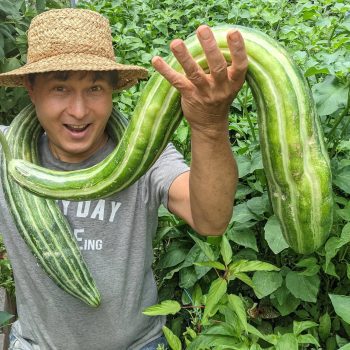 Pin
Pin Image by @growingyourgreens / Instagram
Armenian cucumbers aren’t actually cucumbers at all—they’re melons that taste like the world’s mildest, sweetest cucumber. These pale green giants can grow over two feet long but stay tender and crisp throughout their impressive length. The ribbed skin and curved shape make them look like something out of a fairy tale garden.
The flavor beats regular cucumbers hands down. Armenian cucumbers never turn bitter, even in hot weather when other varieties become unpalatable. The flesh stays cool and refreshing, with a subtle sweetness that makes them perfect for eating fresh. Kids who refuse regular cucumbers often devour these willingly.
These vigorous vines need plenty of space and strong support—they’re serious climbers that can take over a trellis quickly. Plant them after all danger of frost has passed, and give them consistent water throughout the growing season. Harvest them young for the best texture and flavor.
Start Your Adventure Today 🌱
Growing these extraordinary vegetables transforms your garden into a conversation starter and your meals into memorable experiences. Each variety brings its own personality to your plot—the mathematical beauty of romanesco, the jewel-like kernels of glass gem corn, the dramatic purple of black potatoes. Your neighbors will stop by just to see what unusual crop you’re harvesting next.
Don’t try to grow all ten varieties in your first year. Pick two or three that excite you most, then add more unusual varieties each season. Many seed companies now carry these specialty varieties, though you might need to order online for the best selection. Start a gardening journal to track which varieties thrive in your climate and soil.
The real reward goes beyond the novelty factor. These vegetables connect you to gardening traditions that span centuries and cultures. Every bite tells a story of farmers who saved seeds and preserved varieties that big agriculture forgot. You become part of that preservation effort, one purple carrot at a time.
FAQs
Most specialty seed companies carry these varieties online. Try Baker Creek, Johnny’s Seeds, or Seed Savers Exchange. Some local garden centers now stock unusual varieties too. Start with 2-3 types your first year!
Actually, many are easier! Purple carrots and lemon cucumbers often have fewer pest problems than common varieties. Black potatoes grow just like regular ones. The main difference is the excitement factor.
Not at all! Most taste similar to familiar varieties but with subtle improvements. Purple carrots are sweeter, white eggplants are milder, and romanesco has a pleasant nutty flavor. Kids often prefer them!
Yes for most! Dragon tongue beans, glass gem corn, and Chioggia beets are excellent for seed saving. Avoid hybrids and choose open-pollinated or heirloom varieties for the best results year after year.
They’ll think you’re a gardening genius! These vegetables are conversation starters that make you the neighborhood expert. Plus, you’ll have the most Instagram-worthy harvest photos around.



